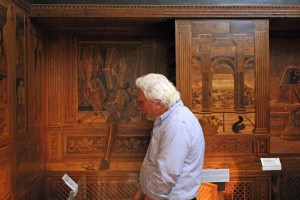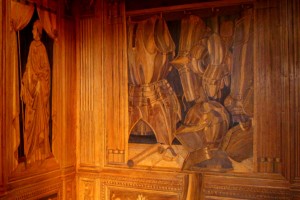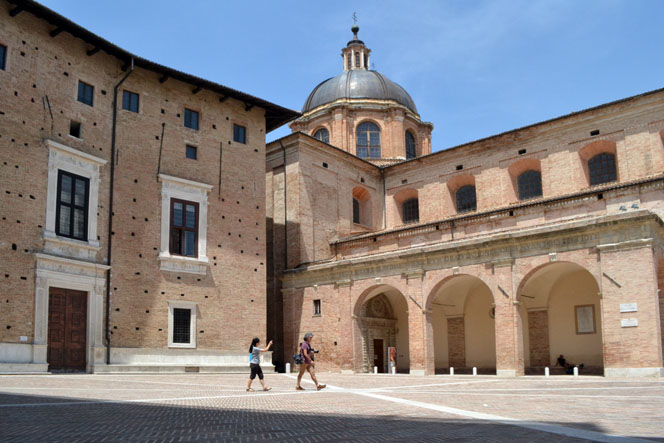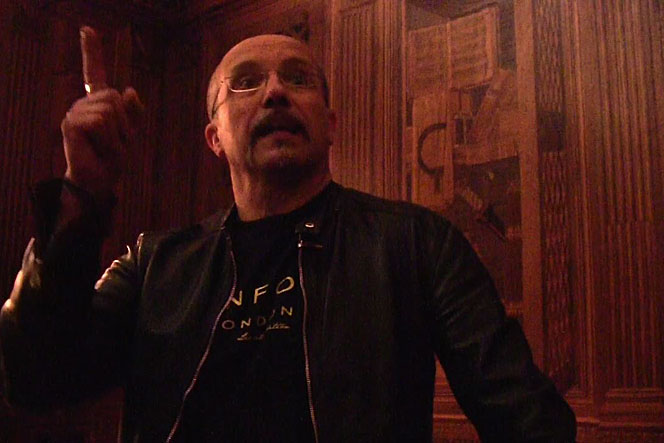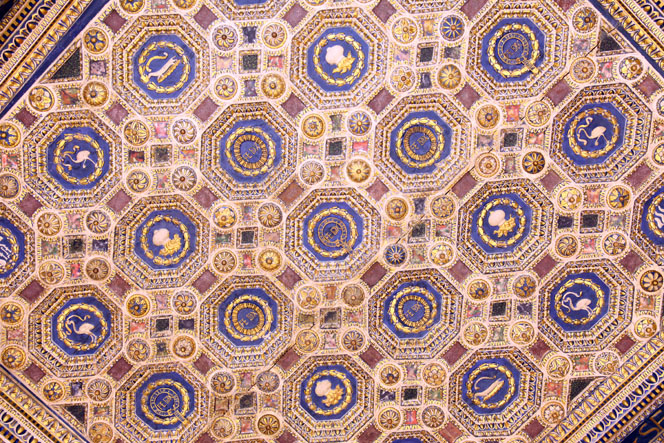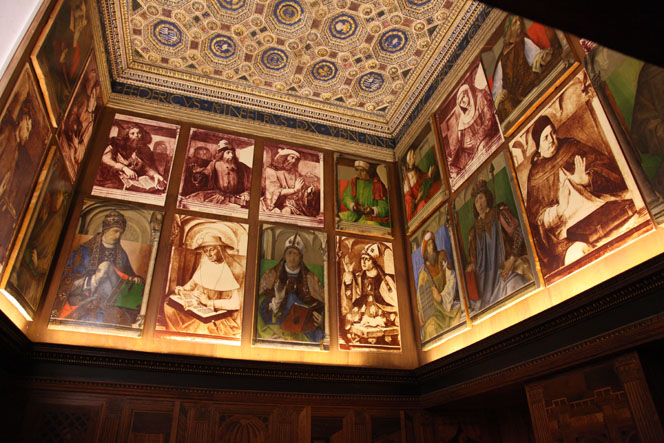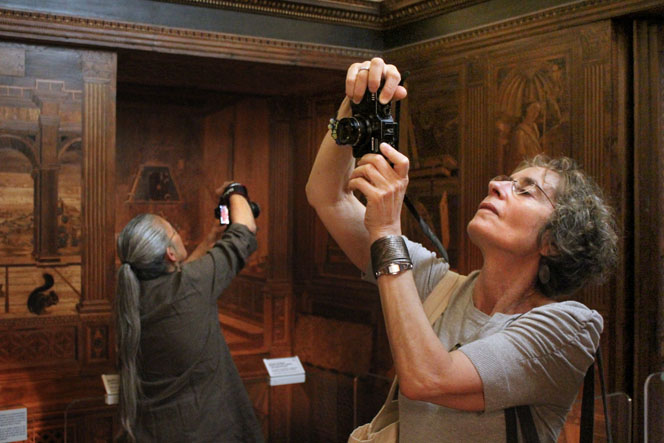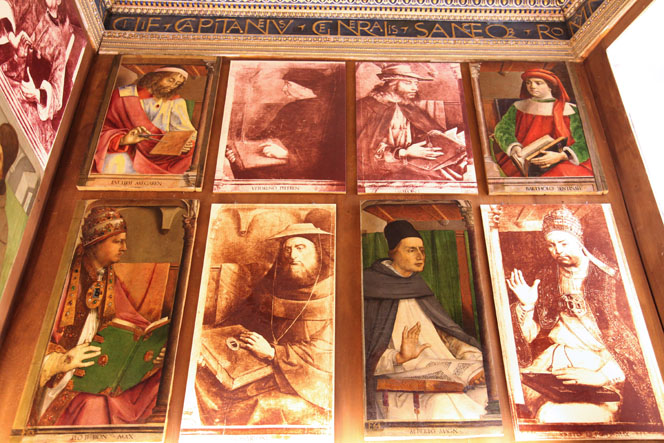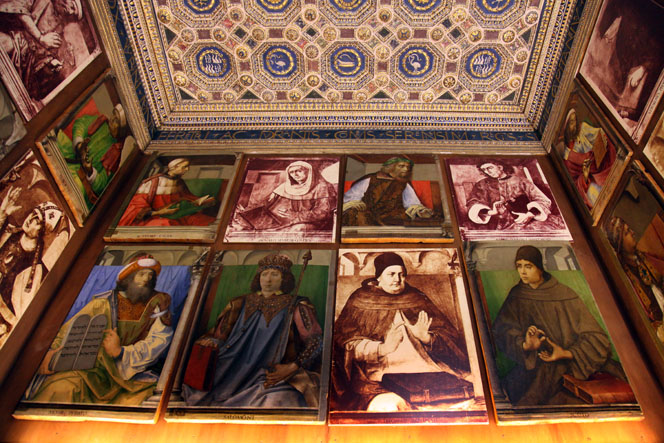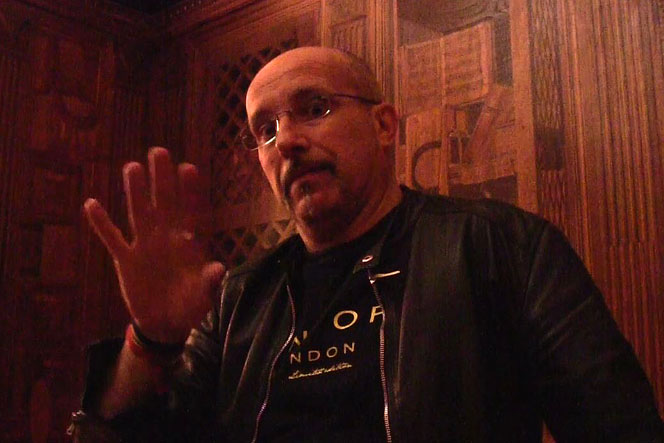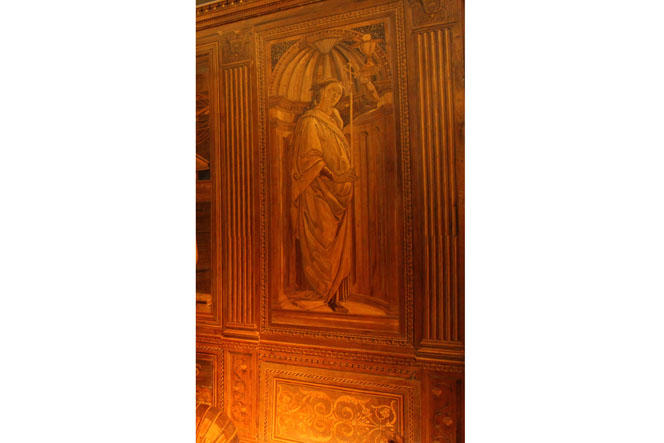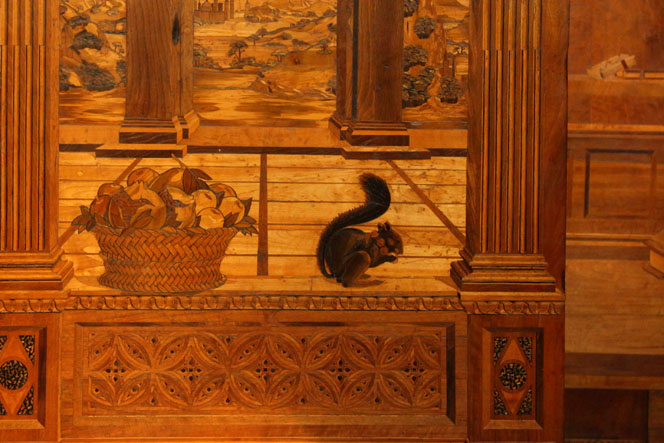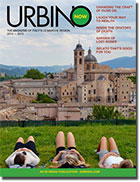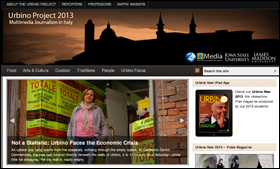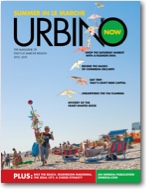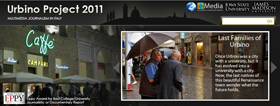Mystery of the Studiolo

Insider’s View of Lord Montefeltro’s Private Study
“It is the most fascinating and complicated room in the Ducal Palace,” says American tourist Martin.
This tourist is commenting upon the Studiolo —the private study –of Lord Federico III da Montefeltro who, from 1444 to 1474, ruled Urbino and much of what is now the region of Marche.
The Ducal Palace became a museum– the National Gallery of Le Marche in 1912. The Studiolo to this day is a prime feature of the palace.
Lord Montefeltro was a landmark figure of the Renaissance and nicknamed “The Light of Italy” for his contributions to enlightened culture. He followed humanist principles as a ruler. He also employed the best copyists and editors of his era to create the most comprehensive library outside of the Vatican.
Montefeltro was an active supporter of the Arts patronizing the early education of Raffaello Sanzio da Urbino, the master painter Raphael who lived in Urbino.
“It [the Studiolo] is a room which was created as the Duke’s most private room, in which he retired in order to read and study about his greatest passion–humanistic culture,” says Alessandro Marchi, the Superintendent of Art in Urbino.
The ornate wood panels located on the lower walls of the study and designed by Benedetto da Maiano’s Florence workshop include images of the armor Duke Federico wore in battle. An adjacent panel shows him dressed in a casual tunic, the clothing he wore when entering his private study.
On the uppermost walls of the Studiolo are portraits of philosophers, mathematicians, poets and Popes who were inspirational people in the life of Lord Montefeltro and in European culture: people like Dante, Plato, Aristotle, Seneca, Saint Ambrose, and Saint Gregory the Great.
Of the 28 original portraits in the Studiolo, only 14 of them remain. Art historian Marchi explains, “The Barberini family [an aristocratic Roman family of the 16th century] took the paintings away that resided in the upper area of the walls, and today we only have half of them since those paintings were divided for inheritance reasons. Half [14] of those paintings were bought back by the Italian government…but the other half is in the Louvre museum in France.”
You can tell which of the oil paintings are missing because those portraits are actually sepia colored photographs of the originals.
Aside from the absence of the original paintings, the Studiolo remains much the same way Lord Montefeltro experienced it. And according to museum administrators, more than 200,000 visitors are sharing that experience each year.



